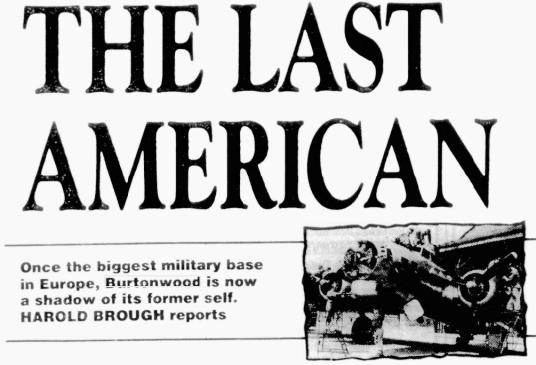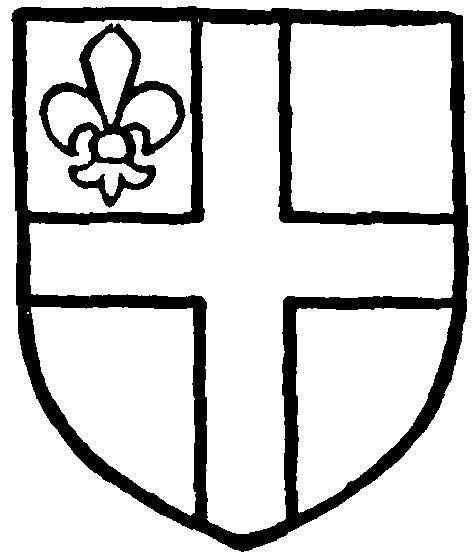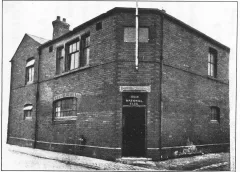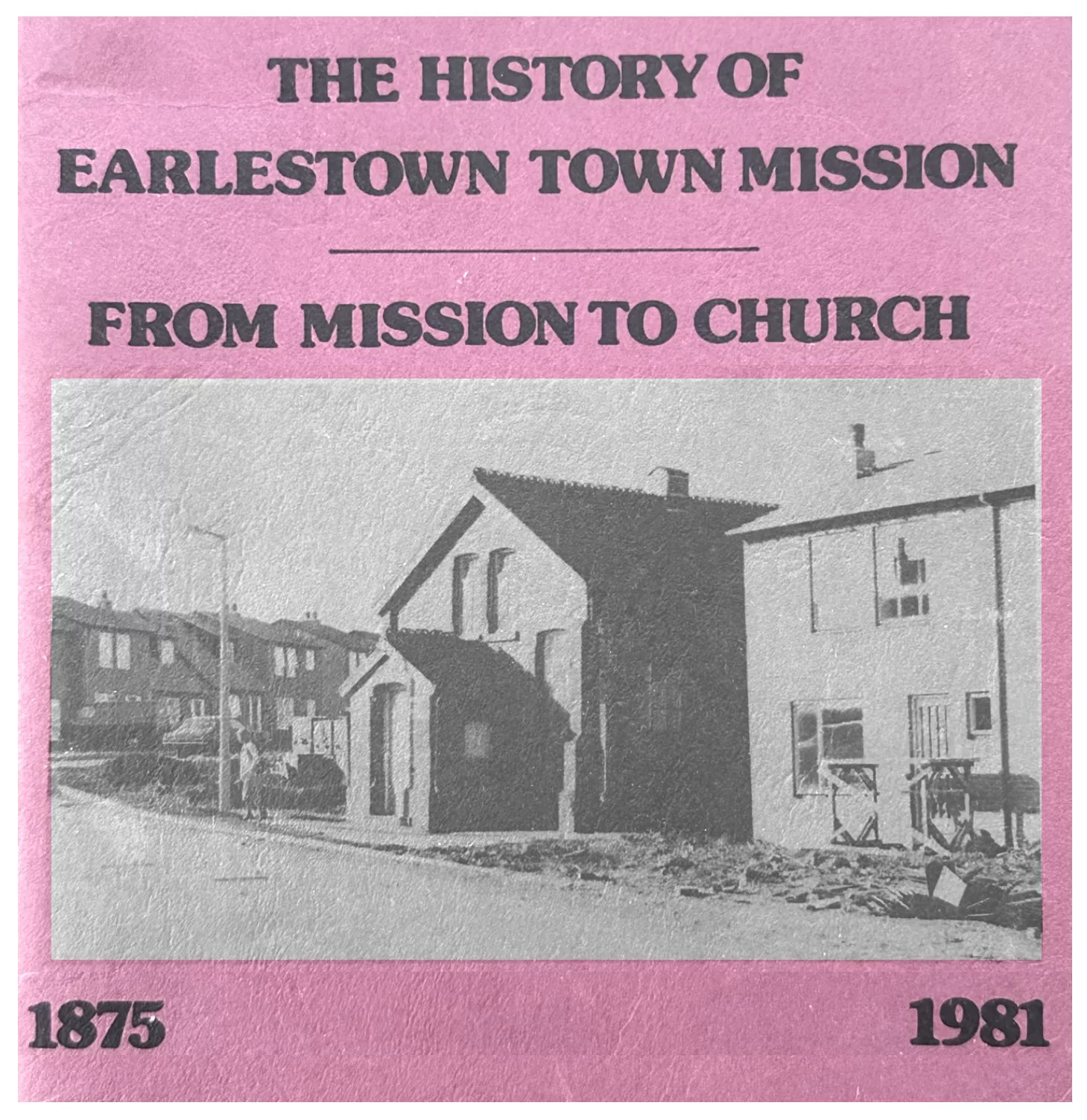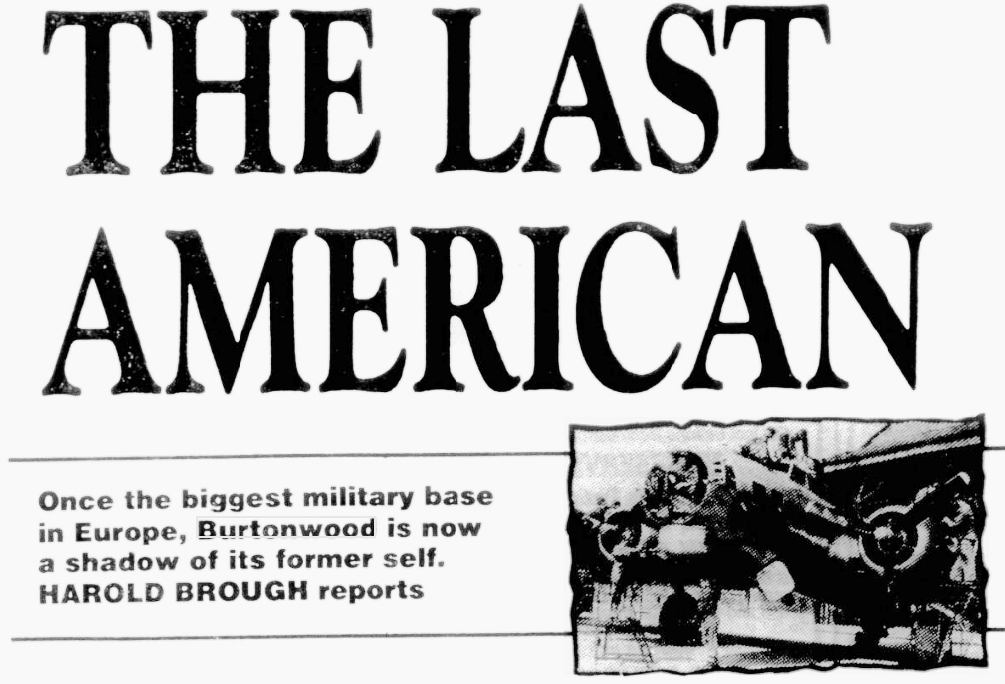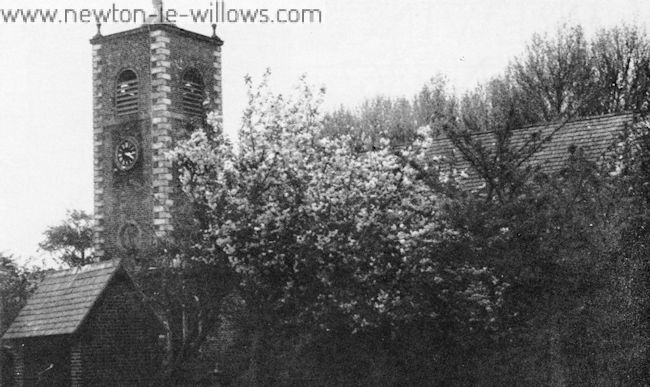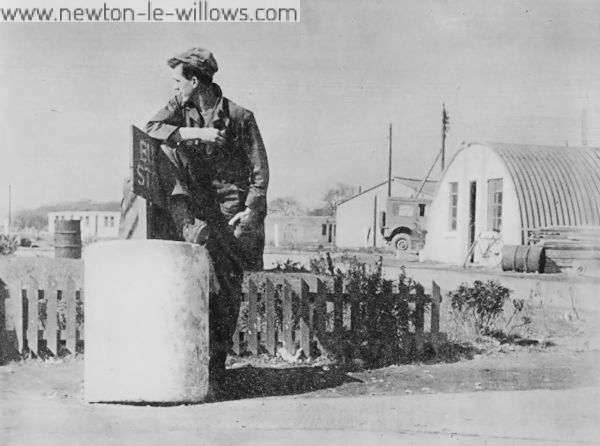From Mission to Church The City Mission Movement: it was discovered that the poor would listen in great number’ provided they were not asked to enter a church” (Owen Chadwick, The Victoria Church, Part Il, P .286). Our Church has its origins in the City Mission Movement of the last Century. The Town Mission in Earlestown began in 1875 as an outreach from the Manchester City Mission. As the Industrial Revolution progressed, great cities, like Manchester, mushroomed with vast working populations overnight. The whole social structure of Britain was changed…
Read More >>The Last American
Once the biggest military base in Europe, Burtonwood is now a shadow of its former self. Lieutenant Colonel Bryan C. Lobdell has secured a place in the 50-year-old history of Burtonwood. This spans from the action-packed war years to today, a period marked by the absence of a clear enemy and American budget cuts that are accelerating its decline. Once, the place resonated with the landings and take-offs of great Flying Fortresses. Men worked in the hangars around the clock, seven days a week, fitting communications and armaments to the…
Read More >>The Irish Club, Earlestown, ’50 Years’ Golden Jubilee 1888-1939.
We go back fifty years. From the four Provinces beyond the sea have come exiles of Erin, settling in and around the district of Newton-in-Makerfield. They are not here of their own desire. They have been forced to leave their native land to earn a livelihood. Strangers in a strange land, they are God’s creatures, with the right to live. They are the poorest of the poor in this world’s goods, but in their poverty they are richly endowed with the spirit of faith, self-sacrifice, and affection, one towards another.…
Read More >>Newton-le-Willows 1821-1851
The impact of the Liverpool and Manchester Railway on: Newton-le-Willows 1821-1851 Newton le Willows is situated on the lowlands of south Lancashire, on the route to the north by way of Warrington, Wigan and Preston. From Saxon times until 1830 the village of Newton was in the east of the township, situated on an inlier of bunter sandstone overlooking a crossing place on the River Deane; this sandstone area provided a dry site and a water supply from shallow wells. The remainder of the township is a broad spread of…
Read More >>Haydock: A History of the County of Lancaster: Volume 4.
In history Haydock has been named as Hedoc, 1169; Heddoch, 1170; Haidoc, 1212. and then recently called Haydock This township has an area of 2,409 acres. (fn. 1) From its situation between Newton and Ashton it seems to have been cut off from the former township. Clipsley Brook separates it from Garswood in Ashton, and Sankey Brook forms the south-west boundary. The population in 1901 numbered 8,575. Haydock is varied in its natural features, sometimes undulating, sometimes flat. On the west the surroundings are unpicturesque but typical of a colliery country, scattered over…
Read More >>Haydock: some history
Haydock Historic Characterisation project from 2011 conducted by National Museums Liverpool and English Heritage Township: Haydock Geology: The solid geology is coal measures sandstone overlain by drift deposits of boulder clay. Historic Core: According to the OS 6 1st Edition map, the main historic core of Haydock appears to have been based at Haydock Town and Old Boston. Linear settlement development also exisits between Haydock Green and Old Boston. Haydock Green is named and depicted on Greenwood(1818) and Hennet (1830) maps. Only the township of Haydock is named on Hennet…
Read More >>George & Robert Stephenson
THE LIFE OF George Stephenson and his son Robert Stephenson Comprising also a history of the invention and introduction of the railway locomotive. By Samual Smiles With Portraits and Numerous Illustrations. [iii] PREFACE. The present is a revised edition of the Life of George Stephenson and of his son Robert Stephenson, to which is prefixed a history of the Railway and the Locomotive in its earlier stages, uniform with the early history of the Steam-engine given in vol. iv. of “Lives of the Engineers” containing the memoirs of Boulton and…
Read More >>History of Burtonwood Brewery
On March 13th, 1867, James and Jane Forshaw purchased the land on which the Burtonwood Brewery now stands. James had some brewing training while employed at the Bath Springs Brewery, Ormskirk, and probably chose the site because of its position mid-way between Warrington and St Helens, and also because there was an adequate supply of suitable water readily available. The first brewery had a 14-barrel open-tired copper, two 12-barrel Fer-menting Vessels and a cellar capacity for 45 barrels. The trade was with Free Houses, farmers and private landowners, mainly in…
Read More >>The Burtonwood Chapel
The Chapel of Burtonwood was founded by Sir Thomas de Bold in 1605, when Burtonwood was part of the Parish of Warrington. It was consecrated by the Rt Rev John Lord, Bishop of Chester, on 16th December 1634 in the presence of Richard Bold and Thomas Ireland of Bewsey. During the Commonwealth, Burton-wood became a separate Parish, and it must have excited many of the Americans who came to Burtonwood in World War II to discover that an early incum-bent of the Church, the Rev. Samuel Mather, had sailed to…
Read More >>The Story of Burtonwood
In the last 25 years the name of Burtonwood has been carried by thousands of American servicemen to countries all over the world. It is the only place in the British Isles to bear this name, and is possibly more widely known than Warrington, to which it was originally a subservient manor. THE WOOD BY THE TUN Probably the original name of Bur-tonwood was simply ‘Burton’, which means the ‘tun’, or farmstead, by a ‘burh’, or fortifiedmanor. The burh could have been the borough of Warrington. The wood, however, was…
Read More >>CASTLE HILL, Newton-le-Willows
1980’s Archaeological Excavations. he text for this post is transcribed from two pamphlets that where produced at the time of the 1980s digs at Castle Hill, to aid public understanding of the work that was being carried out by the archaeologists from Liverpool. Pamphlet #1 Having received permission from the Department of the Environment to excavate a scheduled ancient monument, a North West Archaeological Trust Community Programme is now in the process of investigating an earthwork at Castle Hill, Newton-le-Willows. Although this mound is a recognisable landmark and still stands…
Read More >>Winwick : It’s History and Antiquities
By WILLIAM BEAMONT. Second Edition, 1878 Time, that great clock which requires no winding up, and possesses what so many dreamers have sought for and sought in vain—the secret of perpetual motion—has also, like other clocks, from time to time, but at longer intervals, its striking times which summon attention and invite us to pause and look back, promising in return something which from the past shall teach the present how to improve the future, and instruct while it amuses us. CONTENTS. Part 1. Etymology of Winwick. Part 2. Oswald,…
Read More >>Burtonwood – The Truth About G.I. Town
Four miles from Warrington in Lancashire, is Burtonwood, the great maintenance base for the American Air Lift to Berlin. There several thousand young Americans, most of whom had never been overseas before, were dumped far from their homes with orders to keep the Dakotas, Skymasters and other aircraft flying through the air door in the Iron Curtain. The success of the Air Lift was apparent to all, but locally the social consequences were less happy for both sides. Six thousand American airmen dumped down suddenly to live near a bleak…
Read More >>The Vulcan Works – Making the Lion roar again
During the early part of 1979, Ruston Diesels Limited, the Company then occupying the historic Vulcan Foundry site, agreed to restore the locomotive Lion which had been a static exhibit for many years in the Transport Gallery of Liverpool Museum. This was to provide project work for apprentices and graduate trainees, and to enable Lion to participate in the forth-coming ‘Rocket 150’ celebrations. On 4 April, the engine arrived at Ruston’s looking rather incongruous on the back of an articulated lorry and during the next few weeks it was stripped…
Read More >>Digging into the roots of history
I recently purchased a number of the Burtonwood Brewery in-house ‘Top Hat’ magazines from the 1980s, in one of them was this article concerning the excavation of the Southworth Burial Mound which is between Winwick and Lowton. Digging into the roots of history Remnants of a long-lost civilisation have been unearthed from plough-blade depth on open farmland, close to a huge man-made crater which will eventually accommodate colliery waste. And to mark the sensational discovery, being hailed as the North’s most important prehistoric find of the last decade, the archaeology…
Read More >>
